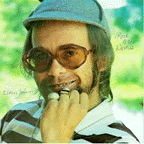- Home
- Introduction, Update Information, Links
- The Super Seventies "Classic 500"
- Readers' Favorite Seventies Albums
- Seventies Single Spotlight
- The Top 100 Seventies Singles
- Favorite Seventies Artists In The News
- Seventies Almanac - Year By Year
- Seventies Singles - Month By Month
- Seventies Albums - Month By Month
- Seventies Daily Music Chronicle
- Seventies Superstars In Their Own Words
- The Super Seventies Archives
- Seventies Trivia Quizzes & Games
- Seventies MIDI Jukebox
- The Super Seventies Bookstore
- The Super Seventies Photo Gallery
- Seventies' Greatest Album Covers
- Popular Seventies Movies & TV
- Seventies Celebrity Portrait Gallery
- Seventies Lyrics Hit Parade
- Top Seventies Artist Music Videos
- Seventies Usenet Music Forums
- Seventies Smiley Calendar
- EXTRA!
- Superseventies.com Facebook Page
- Superseventies.com Reddit Discussions
- The Super Seventies Blog
- Tweet The Seventies
- RockSite InfoBank
- Beatlefan Site
- Thanks For Your Support! / Top Sellers
- Search The Rock Site/ The Web
Elton John
MCA 40461
November 1975
Billboard: #1

![]() n November 1, 1975, Neil Sedaka relinquished the number one position to his boss, Rocket Records owner Elton John. In effect, Elton was succeeding himself, as he not only owned the label Sedaka recorded for but sang backing vocals on his chart-topping "Bad Blood."
It was typical of Elton's luck in 1975, the year everything he touched turned to gold.
n November 1, 1975, Neil Sedaka relinquished the number one position to his boss, Rocket Records owner Elton John. In effect, Elton was succeeding himself, as he not only owned the label Sedaka recorded for but sang backing vocals on his chart-topping "Bad Blood."
It was typical of Elton's luck in 1975, the year everything he touched turned to gold.

Originally titled Bottled and Brained, the disc was supposed to gently break in the rookies with an "uptempo" group of selections. Unfortunately, the brilliant introspection of its predecessor overshadowed the happy tone, allowing critics to hack it to pieces. Even the creator later reflected in Rolling Stone that it "probably doesn't have much depth to it, but I kinda like it."
Second string as the songs may have been, Elton himself was more popular than ever, a phenomenon that began to manifest itself in his daily life. "I'm getting really cheesed off," he complained to Rolling Stone. "A couple of years ago I would deal with three or four fans outside the hotel and walk off down Lexington Avenue. Now it's impossible. I can't cope. I don't want to end up my life like Elvis. I want to be somebody who's active and involved with people and that means going outside. I even tried one of those disguises but that just doesn't work. I went to an amusement park on the tour and 13 people surrounded me for protection. I felt like the Pope."
One place Elton didn't mind crowds was in concert. He wound up 1975 with a two-day spectacular at Dodger Stadium in Los Angeles, the first that venue had allowed since outlawing rock shows after the Beatles played there in 1966. The performances capped a 15-date tour that had attracted over 250,000 people and grossed more than $2.2 million. At the same time, Los Angeles declared Elton John Day, with the man from Pinner, Middlesex getting his own star on Hollywood Boulevard. "I'm telling you, this is more nerve-wracking than a concert," he said as he accepted the honor. Following the memorable outdoor stand before 110,000 people at Dodger Stadium, the entertainer was ordered to bed by his doctors who deemed him about to drop from exhaustion. Gladly, he spent the next four months in Barbados.
- Fred Bronson, The Billboard Book of Number One Hits,
Billboard, 1988.
![]() Reader's Comments
Reader's Comments
No comments so far, be the first to comment .
![]() Main Page
| Additional Singles Intro
| Singles By Month
| Seventies Almanac
| Search The RockSite/The Web
Main Page
| Additional Singles Intro
| Singles By Month
| Seventies Almanac
| Search The RockSite/The Web


